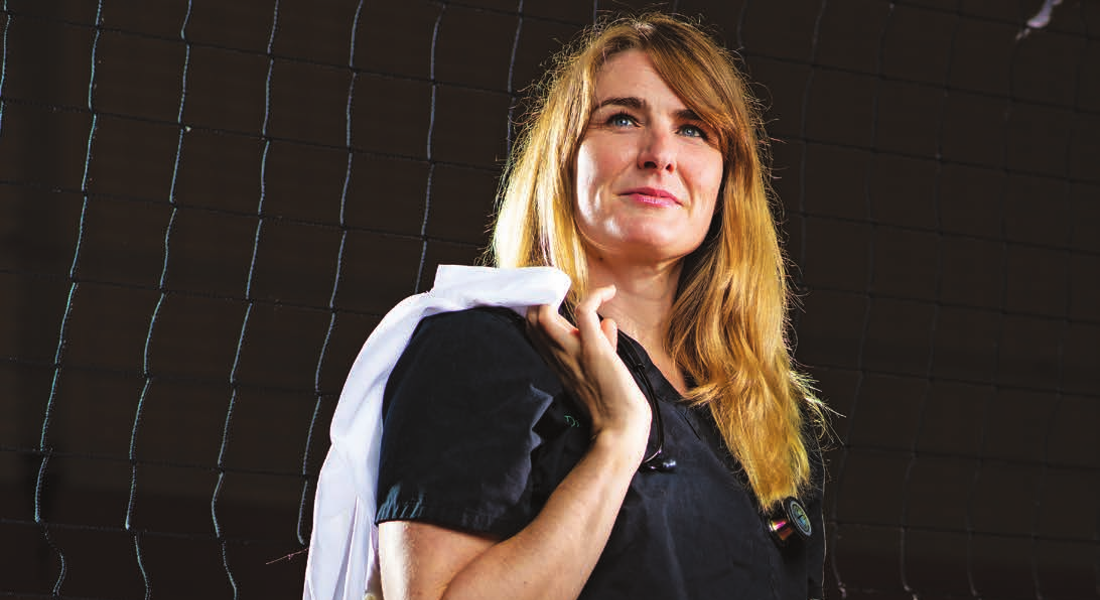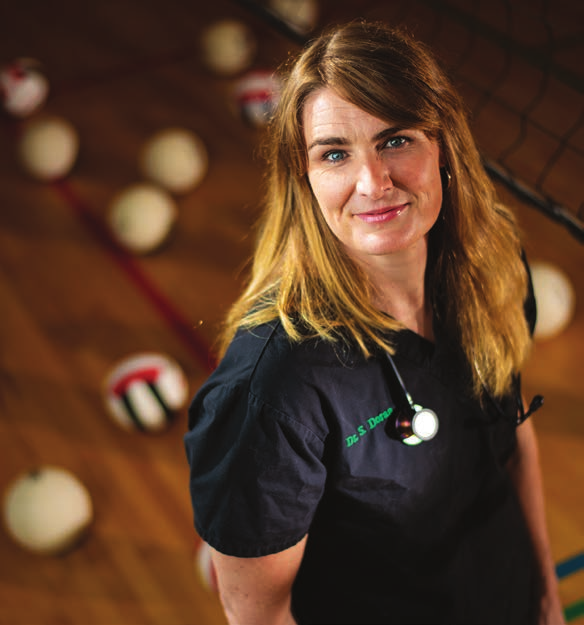Medical doctors can solve complex health riddles and recall multiple human maladies on demand. They have an almost preternatural ability to stay calm under crushing pressure and an unflappable dedication to the well-being of fellow humans. There's little wonder they hold an almost superhuman status among mortals.
Saving lives on the daily, often at great personal sacrifice, a physician is perhaps the closest a person can get to being a real-life superhero. Seasoned by the rigours of MCATs, med school, and gruelling sleep-deprived years of residency, doctors fit neatly at that rare juncture where intellectual brilliance meets remarkable heart, propped up by no small measure of physical and mental stamina.
Coveted by academically inclined students (and their parents) the world over, the occupation holds an unparalleled allure for undergraduate science students in particular. Ask any first-year biology class which of them are planning to pursue medicine and you'll see more hands go up than not.
Although it is difficult to track just how many of these students complete the path to MD as intended, those who do are quick to acknowledge that the journey is not always as straightforward as it seemed in that first year.
The Road Taken
One of the few in that biology class who would not have raised a hand is Shandra Doran ('98 BSc, '05 PhD).
A self-described adrenaline junkie, Doran thrives in high-stake settings. Since beginning studies at the University of Alberta in 1993, she's found these for herself through a combination of high-performance competitive sport and rigorous academic ventures.
These days, she most often gets her fix at the University of Alberta Hospital, where she works as an emergency department physician-a job she hadn't considered until late in her studies.
Born at the same hospital where she now works, Doran grew up in Edmonton and attended Old Scona Academic among a cohort of ambitious classmates, many aspiring to careers in medicine. When beginning her own undergraduate studies, however, she was more interested in treating four-legged patients and enrolled in the Faculty of Agricultural, Life & Environmental Sciences in a pre-vet program before transferring into the Faculty of Science to study zoology.
"I was at kind of a crossroads for myself. I had ridden the athletics train as far as it was going to take me at that point."
Though it would play a huge role in her life, varsity sport wasn't on her radar until a friend suggested she try out for the Pandas volleyball team. Sure enough, she showed up for tryouts and made the team.
"The trajectory from that point upward really changed for me," she says. Doran played with the Pandas for five years, winning the national championship an impressive four times.
Her athletics career continued after graduation; she played with the Canadian national team followed by a season of professional volleyball in Tokyo before injury-related setbacks forced her to examine other options.
"I was at kind of a crossroads for myself," she says. "I had ridden the athletics train as far as it was going to take me at that point."
Adrenaline-spiked Success
Taking the challenge characteristically in stride, in 1999 she approached her old undergraduate advisor Jeff Goldberg, former professor of biology, who agreed to take her on to do a master's in his lab. She enjoyed the research so much that she soon changed her master's into a PhD, graduating in 2005.
Though Doran enjoyed many aspects of research, she was less passionate about the administrative side of academia-writing grant proposals, securing funding, and the other related behind-the-scenes duties.
Medicine, which combines her love of science, high-stakes performance, and human connection, stood out as a field that would check off all her boxes.
Hoping to stay at her alma mater, Doran first applied to the Faculty of Medicine & Dentistry at UAlberta but was missing one undergraduate course required for admission (PhD in physiology unfortunately notwithstanding). So instead, she completed her MD program at the University of Calgary before heading to Queen's University in Kingston, Ont., to start her residency.
When given the opportunity to return to Edmonton, however, she jumped at the chance.
"The U of A is near and dear to my heart, just in so many ways."
"I was really quite fortunate in that the U of A was interested in having me as well, and I was able to transfer," she says. After completing her first year at Queen's, she returned to UAlberta for the next four years of her five-year residency.
"The U of A is near and dear to my heart, just in so many ways. I had a really special experience. I got to experience the athletics and the academics side fully, and I consider myself really lucky to have been able to participate in all of those sides of the school."
Now back at UAlberta, Doran feels quite at home in the adrenaline-spiked world of the emergency department, where she has worked since 2015. Her interest in science and research lends itself well to the problem-solving component of patient diagnosis and management.
"Emergency medicine, probably from the very beginning of med school, was something I was really interested in," she says. "It appealed to me in a lot of ways. You never know what's coming in the door, you get to talk to lots of people, and you see them oftentimes under quite a bit of duress and have to try and make a connection with them fairly quickly."
"I appreciate the challenge of that."
Putting it All on the Line
Athletic performance and emergency medical response have a lot more in common than you might expect.
Doran explains: "You're trying to put your best performance on the line in a sport context and it's the same thing for us when we step into a shift [in the emergency department] and don't know what's coming.
"You're trying to anticipate things and make a decision on how you're going to act on it, but you have to ultimately react to what's in front of you."
Both have a major teamwork component as well. "The athlete in me comes in when we have a resuscitation or a code, for example, and we have to pull together as a team and function well."
For proper execution, the physician must make decisions quickly and communicate clearly with teammates-in this case, nursing staff and medical colleagues-to ensure everyone is on the same page and working toward the same goal, all while under considerable stress.
"You really see what people are made of."
A major component of her role at the hospital is passing on knowledge to new medical residents. "Medicine is really one of those specialties where you pay it forward. You were taught by people coming up, and you will teach going forward."
She encourages her students to think long and hard about their reasons for wanting to pursue medicine. The job comes with more than a few drawbacks-shift work, aggressive patients, and long hours, to name a few from the emergency specialization.
Only a segment of undergraduate doctor-hopefuls will end up in a hospital or clinic. Though often emphasized, academic skill is just one small component in a complex matrix of essential qualities that make a good physician. The few that do end up in a hospital or clinic are those who also possess an uncommon combination of empathy, grit, an appetite for lifelong learning, and a true desire to help people.
The superhero's cape is optional.

